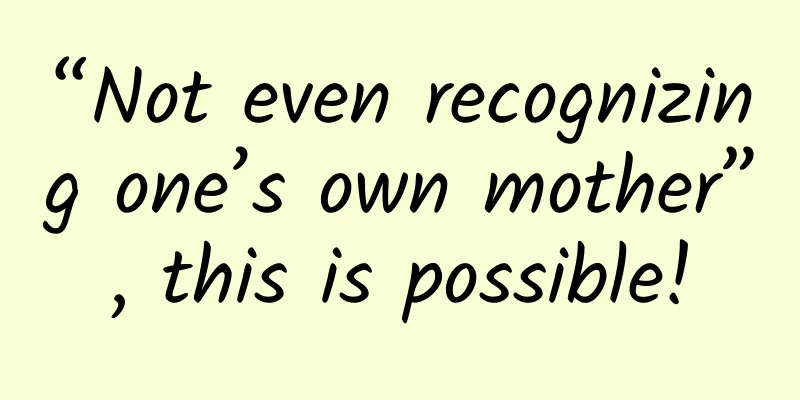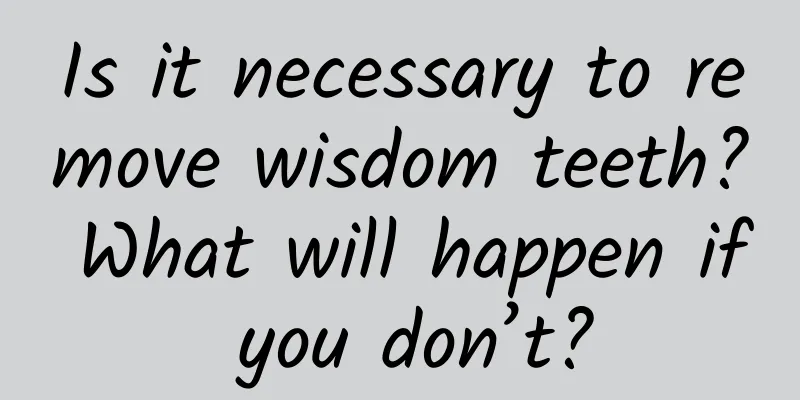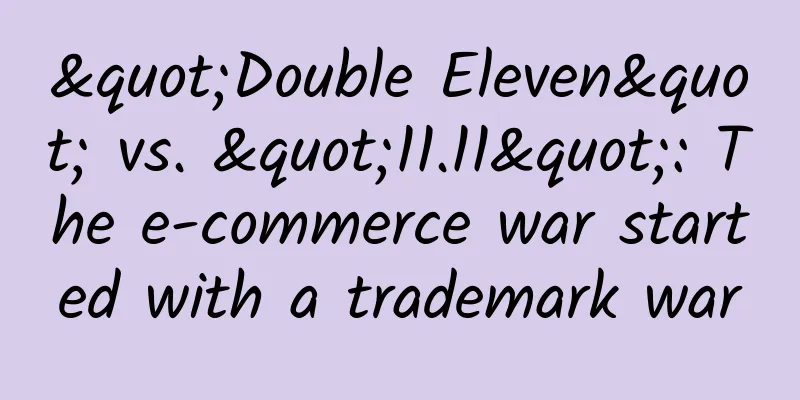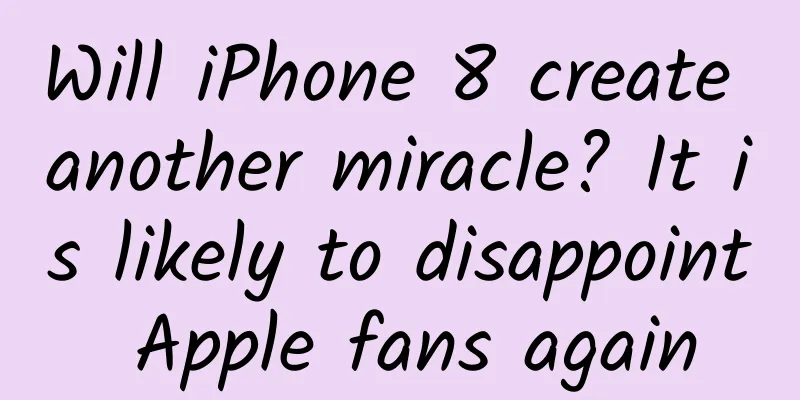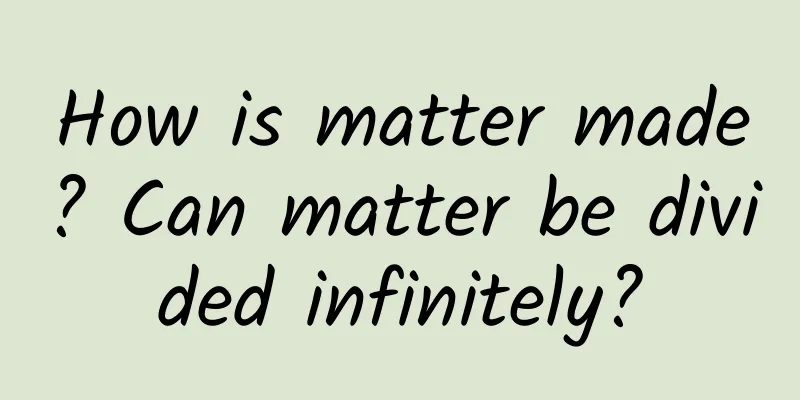This brain-burning thought experiment challenges quantum mechanics
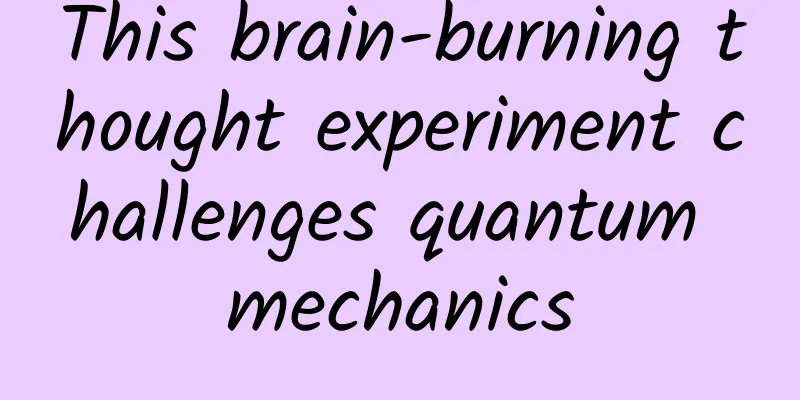
|
As the most famous cultural symbol of quantum mechanics, Schrödinger's cat thought experiment shows the difference between classical and quantum, and directly points to the core problem of the interpretation of quantum mechanics. It also has an extended version, the Wigner's friend thought experiment, which introduces the problem of "consciousness", but the interpretation of its conclusion makes the problem of quantum interpretation more prominent. In recent years, physicists have proposed new thought experiments based on Wigner's friends - the results show that quantum theory itself may face challenges. Written by Dong Weiyuan “Is the collapse of the wave function caused by human consciousness?” "Will the wave function also collapse if the observer is a blind person, an animal, or even a bacterium?" "The results recorded by the instrument were deleted without being discovered. Will interference occur?" … Similar questions can be seen almost every day on domestic and international question-and-answer platforms. The quantum measurement problem The main reason why quantum theory is so puzzling is that physicists have not yet reached a consensus on the problem of quantum interpretation and given a clear picture. Among all the problems of quantum interpretation, the problem of quantum measurement is the most difficult. Quantum theory has been around for more than a hundred years, but how we should understand the quantum measurement process is still a big mystery. According to the most traditional Copenhagen interpretation, when a quantum system is measured, the wave function of the system collapses. This collapse is non-dynamic and is a mutation process in the absolute sense. This claim is actually equivalent to an overbearing and unreasonable rigid rule. Not only does it not provide further explanation for why the wave function collapses, it also squeezes out the space where other explanations may exist. Any real physical process should not be a sudden change in the absolute sense. When we say that a car stops "immediately" after hitting a wall, we actually mean that the deceleration process takes a very short time. The function graph of speed changing over time can be very steep, but it can never be a jump function in the mathematical sense. The same principle should also apply to the evolution of quantum systems. Although the probability of the measured value is a non-causal random occurrence, the overall evolution of the wave function should always be a sufficiently continuous process, otherwise the dynamic causal mechanism behind the evolution of the physical world will probably be challenged, and we can really doubt that "physics no longer exists." In this sense, the Copenhagen interpretation, at least for the problem of quantum measurement, cannot be regarded as a qualified physical interpretation. For this reason, physicists have never stopped exploring various interpretation theories since the birth of quantum mechanics. However, these attempts are not all so "physical". When von Neumann laid the mathematical foundation for quantum theory in 1932, he proposed the conjecture that "consciousness causes the collapse of the wave function". His proposition influenced some other physicists, the most important of whom was the Austro-Hungarian-American physicist Eugene Wigner. Wigner and von Neumann were from the same hometown, only one year apart in age, and had collaborated on many papers in their youth. In 1930, they were invited by Princeton University to go to the United States together, and later both stayed in Princeton to work. In 1937, they both became American citizens. Wigner himself is a top physicist with many achievements and winner of the Nobel Prize in Physics in 1963. With such a long and close relationship and von Neumann's rising status in the academic world, Wigner agreed with von Neumann's interpretation of consciousness for quite a long time and was deeply involved in the exploration and research of related theories. Therefore, some people today call the interpretation of consciousness the "von Neumann-Wigner interpretation." Wigner's friend thought experiment In 1961, Wigner proposed a thought experiment in a paper titled "Remarks on the Mind-Body Question", which is the famous "Wigner's friend" paradox. Wigner hopes to prove that consciousness can indeed have an impact on the physical world. This thought experiment can be seen as an upgraded version of Schrödinger's cat thought experiment, except that the box containing the cat is replaced with a laboratory that is completely isolated from the outside world, and the silly cat is replaced with an experimental scientist who is proficient in physics. Let's use F to represent this scientist; outside the laboratory, there is also a theoretical physicist who does not do anything, and we use W to represent him. When F finishes the experiment, the door of the laboratory will open, and F and W can exchange information and synchronize the experimental results. Before all actions begin, let W and F predict the results of the final information synchronization. Obviously, the predictions given by the two scientists will be exactly the same. Both of them believe that the probability of "W knowing that F sees ↑" and "W knowing that F sees ↓" will be 50% each, that is, Now let F make a measurement, and she will get a certain observation result. Let's assume that the result she sees is ↑. Do not open the door of the laboratory at this time. Under the premise of maintaining isolation, ask the two scientists to predict the situation after opening the door again. At this time, inconsistent predictions emerge. The prediction of F becomes: And W's prediction remains: The core contradiction lies in that, for F, the particle being tested has collapsed from the quantum superposition state to the classical state, and the possibility of "F seeing ↓" has been ruled out by F himself. However, in W's description, the laboratory as a whole is still regarded as a superposition state, and the possibility of "F seeing ↓" still exists. Does awareness play a role? According to quantum theory, as long as the door of the laboratory is not opened, the wave function of the whole system of F and the measured particle will not collapse. No matter what kind of entanglement occurs within the system (F's measurement of the particle means that F and the particle are entangled), the whole system is always undergoing unitary evolution, and the initial possibilities will not be lost in the evolution process. In Schrödinger's cat thought experiment, before the box is opened for observation, the cat is in a superposition state of both dead and alive, or roughly speaking, the cat will constantly switch back and forth between dead and alive. Since W and F have equally good reasons for their predictions, but they give different probabilities, which one is correct? Wigner did not directly give his clear preference, but just hoped to use this paradox to show that consciousness should be regarded as a special physical object. However, he did attempt to imply that the culprit for this contradictory situation was F's consciousness. If F were replaced by an electron, a hydrogen atom or a stone, we would no longer be confused about who to believe, and W's superposition description would be the only trustworthy prediction. Wigner's idea is obviously too unconvincing. There are countless possibilities between the stone and the cognitive scientist F. Can a dog, a cat, or even a paramecium that can respond to external stimuli be considered conscious? Just as we cannot and should not draw a clear line between the macroscopic and microscopic, we cannot find the watershed between consciousness and unconsciousness. In his later years, Wigner changed his opinion and no longer believed that consciousness caused the collapse of the wave function. However, this paradoxical thought experiment did not fade out of people's sight. Instead, it became an arena for various quantum interpretation theories: except for the orthodox Copenhagen interpretation, which was eliminated, other theories such as the multi-world interpretation, relational interpretation, Bohm mechanics, quantum Bayes, etc., all provided their own explanations. The MWI holds that the world is constantly bifurcating, and the divergence between W and F arises because the world in which F lives has bifurcated, while the world in which W lives has not yet bifurcated. Note that in the experimental setting, the world of F (inside the laboratory) and the world of W (outside the laboratory) are completely isolated, so it makes perfect sense that one world bifurcates while the other does not. The relational interpretation (RQM) is a relatively recent interpretation proposed by Carlo Rovelli. Inspired by the ideas of relativity, he proposed that different measurers can write different quantum state descriptions for the same measured object, just as observers in different reference frames in relativity will see the same object as having different momentum and energy. Of course, in RQM, the factor that makes the difference is not whether the reference frame is moving or not, but the entanglement relationship between the measurer and the measured object. In the thought experiment, at first, neither F nor W was entangled with the particle, so the state descriptions given by the two were consistent. When F measured the particle, entanglement occurred between F and the particle, but there was no entanglement between W and the particle. It was this difference in entanglement that caused the difference in the two descriptions. Bohm mechanics is a non-local hidden variable theory. The measured values of various properties of particles are already objective facts before they are measured. Probability is just an illusion. Therefore, under the framework of Bohm mechanics, we can trust the measurement results of F. As for the different descriptions given by W, they just contain redundant void navigation wave components. Quantum Bayes is an interpretation full of humility and even pessimism. The core idea is that we cannot understand the true face of the universe, or that there is no eternal and unchanging objective truth waiting for us to discover. All we can do is to update the old experience and cognition by relying on the results of each experimental observation like a headless fly. Under this concept, the contradictory description of F and W seems to be nothing great. It simply means that the cognition of F has been updated, but the cognition of W has not yet been updated. In the view of physics masters such as Leonard Susskind, the absurdity of quantum Bayes is even worse than "consciousness causes the collapse of the wave function", and the ideas advocated by this theory should not appear in serious academic discussions. An updated version of the thought experiment As a screening test, there are so many candidate interpretation theories that can explain Wigner's friend thought experiment. It seems that the difficulty of this test question is too low. In 2018, two physicists Daniela Frauchiger and Renato Renner from the Swiss Federal Institute of Technology in Zurich proposed an upgraded version of Wigner's friend thought experiment [1]. This enhanced thought experiment dramatically increases the difficulty of the screening test. Not only are all quantum interpretations at risk, but even the existing quantum theory itself is facing a crisis of trust. After a complex and brain-burning analysis, Frauchiger and Renner came to a very explosive conclusion: Quantum theory cannot be logically consistent! Of course, a rigorous statement would not be so crude and simplistic. In fact, their thought experiment (hereinafter referred to as FR thought experiment) proves a "no-go theorem", which points out that the following three assumptions cannot be true at the same time: (Q) The existing quantum theory is correct; (C) The same theory and information must lead to the same predictions; (S) A single measurement produces only a single result. Looking at these three assumptions, it is really difficult for us to deny C and S. If we have to choose one, we can only reluctantly choose Q. This is also the general logic of Frauchiger and Renner's judgment that quantum theory is unreliable. So how did the FR experiment prove this impossible theorem? In Frauchiger and Renner's original paper, both the experimental design and the logical analysis process were extremely complicated and lengthy, and it was easy to burn your brain if you followed the authors' train of thought throughout the process. Fortunately, in the following years, this thought experiment was greatly modified and simplified by researchers. (The original version included two Ws, two Fs, and a series of event information records based on time series.) In the simplest form of the modern version of the FR experiment, only three observers, W, F, and B, are involved, and the observed object has changed from a superposition particle to a pair of entangled particles. The analysis process has been simplified to the point where its core essence can be summarized in just two sentences: If the existing quantum theory is valid, then the measurement result must satisfy an inequality called Local Friendliness Inequality, or LF inequality for short. However, in the FR thought experiment, this LF inequality can actually be broken, which leads to a negative conclusion. Some readers may find this routine familiar, as it is very similar to the way of breaking Bell's inequality to prove that locality and reality cannot be achieved at the same time. In fact, they are not only similar in routine, but the entire modern version of the FR thought experiment is basically a combination of Wigner's friend thought experiment and the Bell experiment. Causal network of FR experiment In order to avoid the hypnotic effect that may be caused by the algebraic operation of state vectors, we will use a more intuitive causal diagram to explain. Now let us first review the basic structure of Bell's experiment. As shown in the figure above, A and B are two independent measurements. We use X and Y to represent the parameter settings that control the measurement operation, and A and B to represent the results of the measurement. λ represents the parameter that determines the state of the measured object, which is the so-called hidden variable. If the space-time light cone is used to reflect the causal relationship between these five variables, it can be roughly drawn as shown in the figure below. Generally speaking, people prefer to use a directed graph to show a more complex causal network. The causal graph corresponding to the Bell experiment looks like the following. For the classical physical world, this causal network must satisfy three conditions: • P(A|X)=P(A|XY), that is, the result of A is independent of Y; • P(B|X)=P(B|XY), i.e. the result of B is independent of X; • Bell’s inequality holds. The first two ensure that there is no superluminal communication mechanism between two independent measurement operations, and the third is the result of the joint limitations of locality and hidden variables. Of course, we all know now that the measurement of an entangled quantum system will produce a result that breaks Bell's inequality, thus completely ruling out the possibility of a local hidden variable theory. But the first two are not broken, which is the fundamental reason why communication cannot be achieved by relying solely on quantum entanglement. Since the first two points still hold for quantum systems, we can keep this causal diagram and only replace λ, which represents the classical hidden variable, with a quantum system Ψ that is not constrained by Bell's inequality. This way we get a causal diagram that is still valid in the quantum world. By adding a few elements to this causal diagram, we can draw the causal network of the FR thought experiment. In order to save a few letters, we will also use W and F to represent the measurement results obtained by these two people. Similar to the situation in the Bell experiment, there are still restrictions prohibiting superluminal communication, namely • P(W|X)=P(W|XY), that is, the result of W is independent of Y; • P(B|Y)=P(B|XY), that is, the result of B is independent of X. In addition, since the causal network structure is slightly more complicated, some additional constraints are naturally added. • P(WB|XY)=∑FP(WFB|XY), that is, the sum of the Ψ→F→W causal connections across all F should be equal to the Ψ→W causal connection; • It is based on these seemingly self-evident additional restrictions that the LF inequality can be derived. Don't forget that in this figure we have replaced the object being measured with a quantum system Ψ that is not restricted by Bell's inequality, which means that the LF inequality is a restriction that still applies to the quantum world. Since the specific forms of the LF inequality vary, and the derivation process of each specific form is very cumbersome, I will not go into details here. As for how the FR thought experiment violates this LF inequality, the main principle is actually similar to the paradox generation mechanism in the original version of Wigner's thought experiment. On the one hand, W can select the state of F by choosing the value; on the other hand, from W's perspective, F and the system behind her are unitary evolution, and all possibilities are included. With this "out of nothing" mechanism, the LF inequality is broken. As mentioned above, if the measurement result does not satisfy the LF inequality, then there seems to be a problem with the existing quantum theory. There is no end to the answers What exactly the FR thought experiment means is a question that is still hotly debated. In the eyes of most researchers, this thought experiment does not mean the end of the road, but rather a pioneering tool for exploring the interpretation of quantum theory. What is certain is that when dealing with the logic and causality of the quantum world, we must always be cautious and carefully examine every link in the logical chain, and we cannot just borrow intuitive experience from the classical world. If necessary, we may even need to completely rebuild the lowest level of causal relationship framework. In addition, the paradox shown in this thought experiment is closely related to quantum contextuality (see "Is quantum contextuality the boundary of physical laws?"). The so-called quantum contextuality means "there is only local logical consistency, but no global logical consistency." From this perspective, it is normal for paradoxes to appear, and it would be strange if there were no paradoxes. Of course, the mutual confirmation of quantum intertextuality and FR thought experiment does not guarantee that quantum theory is complete. It only shows that the logic and causal structure in the quantum world must be different from the experience we are familiar with in our naive perception. As for whether our existing logic and perception need to be corrected, or whether the quantum theory we have constructed is flawed? There is still no reliable answer to this question. OK, I have finally finished introducing this brain-burning thought experiment. However, at this moment, a famous quote from an online joke teller keeps echoing in my mind: Do you think what you think is what you think? Produced by: Science Popularization China |
>>: World Oceans Day | Our bond with the ocean is a two-way journey
Recommend
PSA joins hands with Huawei to create a connected car phone to take over all car information
During the Hannover Industrial Fair (April 23-27)...
Android Wear 2.0 preview: new single sign-on feature
In the recently released Android Wear 2.0 develop...
Jiangnanhui Douyin clothing four-piece set burst instantly exploded into a god account + video deduplication
Jiangnanhui Douyin Tutorial: March 29th Clothing ...
In the third quarter, revenue increased but profits did not. What happened to BYD?
In the third quarter of this year, BYD's sale...
Human Lunar Day丨How much do you know about it, which is so close to the Earth?
Copyright image, no permission to reprint On July...
How to operate a (product) APP?
This article is a summary of novice operations . ...
Three modes of unmanned live streaming sales: a detailed and in-depth presentation of the operation process of unmanned live streaming (2 videos in total)
Three modes of unmanned live streaming sales: a d...
How effective are Estee Lauder skincare products?
The editor’s skin care products are mainly Estee ...
Does breathing through the mouth really ruin your appearance?
We need to breathe every moment, but have you eve...
There are few new 8K TVs at CES 2023, sales are declining, and is ultra-high definition a false demand?
As the most famous industry event in the global c...
College Entrance Examination Blessings Short 10 Words Blessings for Success in the College Entrance Examination Blessings for Success in the 2020 College Entrance Examination
The college entrance examination is coming, are t...
Retention rate? Several classic methods to keep more users!
An APP and its users will go through four stages:...
Eating Enoki mushrooms in a cycle will ensure you have "blood in your urine" from dragon fruit - what's wrong with these foods!
There is a type of food that is jokingly called &...
Detailed development and customization of travel mini-programs. What are the travel WeChat mini-programs?
The emergence of mini programs has simplified the...
Nine tools to help you build your own chatbot
【51CTO.com Quick Translation】Today, artificial in...

